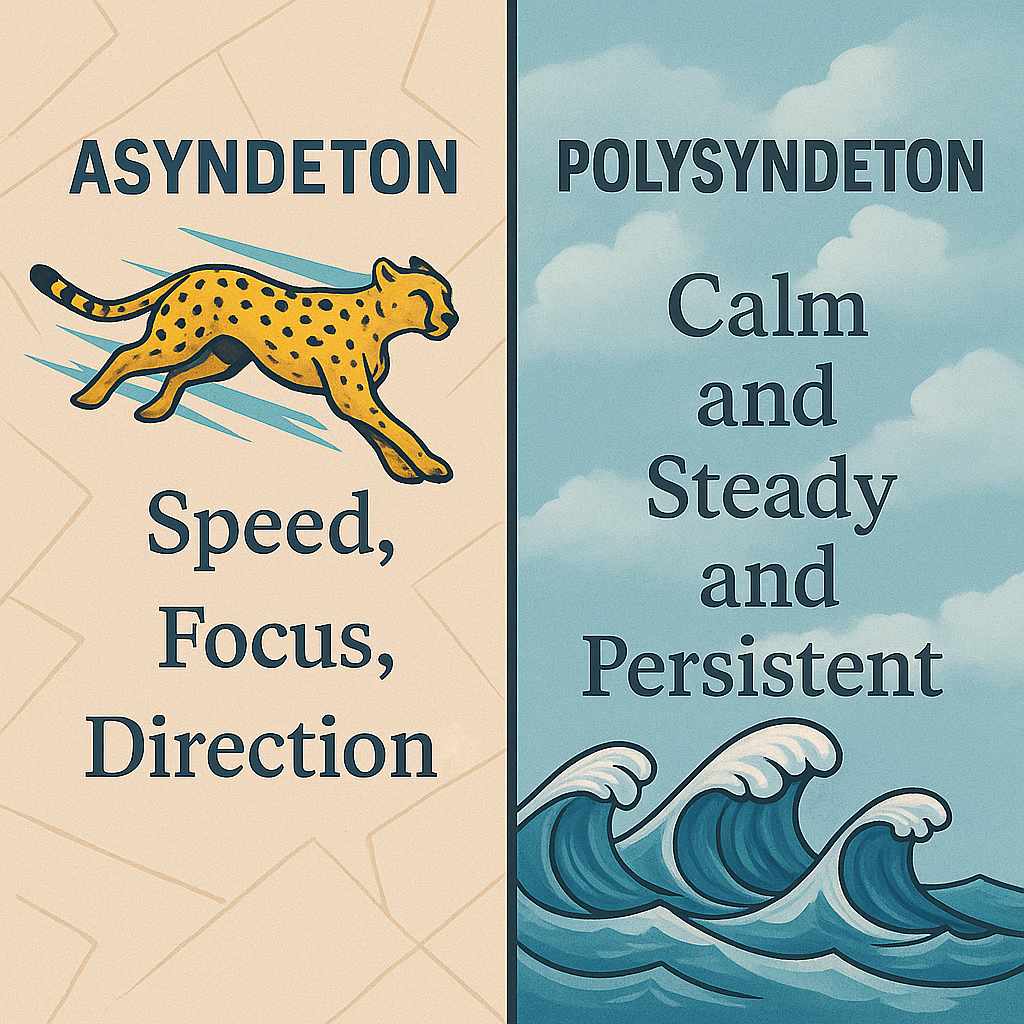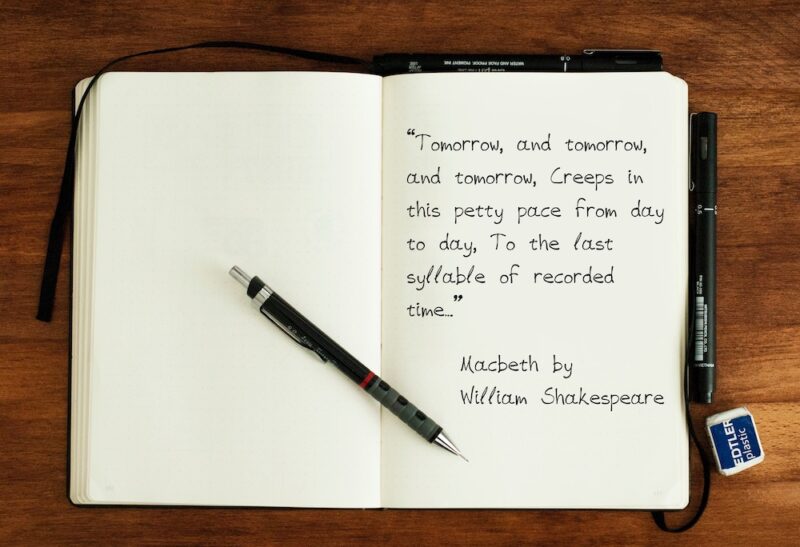Writers are constantly searching for rhythm. Some of their sentences glide, others land with weight. Often, conjunctions play a central role in setting that rhythm—those small linking words that decide whether a list feels rushed or measured, whether a thought builds steadily or unfolds in quick succession.
By relying on conjunctions or leaving them out, writers can adjust the pace of a sentence or paragraph. Asyndeton and polysyndeton are two techniques that do just that. One omits conjunctions to tighten the flow; the other repeats them to stretch it. Although they are simple in structure, both techniques can significantly shift the tone and tempo of a passage.
This kind of rhythm isn’t just about sound. It affects how ideas are received—how urgency is felt, how emphasis is placed, how motion is carried from one phrase to the next. Once you learn to recognize these patterns, you’ll start to notice how much they shape the texture of language, from ancient epics to modern fiction.
What is asyndeton?
Asyndeton is the omission of conjunctions between parts of a sentence. Instead of linking items with and, or, or but, the writer simply leaves them out. The result is a clipped, fast-paced effect that often heightens urgency or drama.
Example:
“I came, I saw, I conquered.”
There’s no and connecting the clauses. The rhythm is sharp and quick, suggesting swift, decisive action. Julius Caesar’s famous line would feel flatter if rephrased: “I came and I saw and I conquered.” The omission gives it punch.
Writers use asyndeton to accelerate the rhythm of a sentence, compress time, or pile on ideas in a way that feels immediate. Hemingway, in particular, used it to strip down prose into lean, forceful lines.
What is polysyndeton?
Polysyndeton, on the other hand, adds conjunctions—usually and—between every item in a list, even where a comma would typically suffice. It slows things down and gives each element more weight.
Example:
She ran and laughed and jumped and shouted.
Each action is linked. The repetition stretches time, creating a rhythm that feels expansive or even overwhelming. It draws attention to every item, refusing to let any one slip past unnoticed.
Polysyndeton can mirror breathlessness, obsession, or a kind of childlike wonder. Writers like William Faulkner and Cormac McCarthy have used it to great effect, especially in long, winding sentences that mimic thought or stream of consciousness.
Does polysyndeton only use “and”?
While and is the most common conjunction used in polysyndeton, it’s not the only one. Any coordinating conjunction—or, but, nor, so, for, yet—can be repeated to create the same effect. The key feature of polysyndeton isn’t which word is used, but how frequently and deliberately it appears. Repetition slows the pace, draws attention to each element, and alters how the sentence moves.
Example with “or”:
You can stay or go or wait or hide or run or fight.
The sentence feels stretched, almost overwhelmed by the options. The repeated or keeps each action separate, building a sense of indecision or urgency.
Example with “but”:
He knew it was dangerous, but he stayed, but he watched, but he didn’t move.
Here, the repetition of but underscores tension. It draws out the conflict and makes each clause stand on its own.
Example with mixed conjunctions:
We can try and fail or try and win or not try at all.
The sentence uses both and and or to build a rhythm that mirrors uncertainty or internal weighing of options.
Writers often default to and because it has a natural cadence and feels less intrusive. But used thoughtfully, other conjunctions can achieve equally strong results—especially when the goal is to highlight contrast, hesitation, or emotional pressure.
So what’s the difference—and why does it matter?
The two techniques couldn’t be more different in their effect. Asyndeton strips things down. It suggests speed, efficiency, or even brutality. Polysyndeton builds things up. It slows the reader down, saturating the sentence with rhythm and emphasis.
One creates pressure by omission. The other creates weight through repetition.
But both draw attention to structure. They’re deliberate choices that break from neutral, conventional pacing. Whether you’re writing fiction or analyzing a text, spotting them can reveal what a sentence is doing beneath the surface—how it wants to be read, how it moves.
When to Use Each One
Use asyndeton when you want to:
- Increase momentum
- Emphasize starkness or decisiveness
- Trim excess and create sharp edges
Use polysyndeton when you want to:
- Slow the pace
- Emphasize abundance or intensity
- Create a lyrical, rhythmic feel
Both can be overused, of course. Asyndeton can start to sound robotic; polysyndeton can become heavy and self-indulgent. However, when employed effectively, they meticulously mold voice and mood.
Think of asyndeton and polysyndeton as tools of tone control. They aren’t just grammatical flourishes; they’re structural levers that change how a sentence breathes. In writing that wants to be noticed, rhythm is everything.
Further Reading
Question: Does Asyndeton Extend Past Conjunctions? on Reddit
Cormac McCarthy uses the word “and” so many times in No Country For Old Men on Reddit
Polysyndeton vs. Asyndeton | The Quintilian Institute of Words about Words on YouTube




